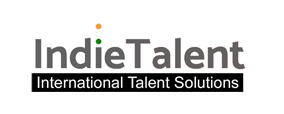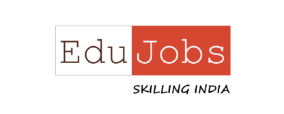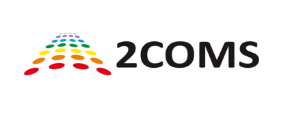Covid-19 not just reminded the world of the value of life but also forced companies to reshape their working structures and practices
Covid-19 not just reminded the world of the value of life but also forced companies to reshape their working structures and practices. The corporate culture, which had begun eating into the quality of life of corporate workers, had to be converted into a work from home or hybrid work model. As a result, overhead costs have been reduced and employee presence on company premises has increased, which has been a trend since the pandemic and its subsequent containment. Now employees are working from the comfort of their homes, giving them time to pay attention to the quality of their lives and health. The pandemic also brought the long overdue focus on mental health and well-being, making psychological environment in the work place a necessity.
As human beings, we all have the basic need to be acknowledged, appreciated, and valued. This truth was driven home courtesy of the pandemic, resulting in many employees choosing to quit their jobs and live a more worthwhile life that made them feel fulfilled and valued. And this is no different for the employees either, for whom the very basic essentials are:
They feel valued by their company or their boss. Studies reveal that 79% of people who quit jobs mention “lack of appreciation” from their bosses, as their main reason for leaving.
- Having flexible working hours
- A strong and trusting team
- Healthy work culture and environment.
- A strong sense of belonging to their organisation or business
In essence, a psychologically safe workplace with a healthy, comfortable work culture is the main reason for the successful retention of a loyal workforce.
Changing the Work Culture – Possible?
Changing or improving the work culture is not a quick-fix process. If not ascertained and established from the beginning, this takes time and a great deal of insight and effort. To begin with, organisations can offer psychological support with a system to manage and balance workload with a clear set of expectations and goals, all steered by strong leadership. Companies can also collaborate with life coaches and mental health professionals specialising in organisational behaviour and employee well-being. A safe psychological environment has a direct impact on employee performance.
Managers can inculcate and exercise a more human approach as part of perks for employees to reduce the rate of attrition.
- Understand the challenges and concerns faced by the employees.
- Establish meaningful connectivity and interaction in the work space
- Cultivate interpersonal and social connections
- Create and synergise a shared purpose and identity within the organisational set-up
The benefits of retaining qualified and skilled employees far outweigh the effort required to build a sound system and work culture. Investing in employee retention is also more financially viable than the cost of replacing an employee, which is nearly twice as much as the annual pay-check.
Steps towards a healthy rate of retention
An organisation’s biggest asset is its human resources, and nurturing those resources is essential for the success of the organisation. The relationship between the company and its employees needs to be mutually beneficial for the company and its employees to flourish and prosper. A democratic approach and working system will build a stronger foundation and a healthy work culture. Your employees need to be an intrinsic part of the system and process. This can be easily achieved by following these common types of exercises that are widely practised by successful organisations:
- Have a suggestion box for the employees to drop in their suggestions and ideas towards the improvement of the work environment.
- Conduct an in-house survey with the employees filling in a specially designed questionnaire based on the work culture, structure and system of work, hierarchical dynamics, and so forth. You can either call in professionals to conduct the survey on your behalf or prepare one yourself.
- Identify the disgruntled employee(s) and resolve the problem as soon as possible before it affects the work environment. The famous saying—"one rotten apple spoils the basket of apples"—holds true. Be vigilant and in-tune with the inner circle of your employees. You can do this by taking time to interact with them on a personal level, organising outings and so on. The idea is to make yourself more accessible and approachable. Doing this will also save you time, effort, and money on hiring and training.
- Hold informal in-house meetings to discuss the feedback and brainstorm solutions. By doing so, you are not only involving the workforce in the process but also acknowledging their efforts, making them feel valued and inculcating a sense of belonging in them towards the organisation.
- Convert the feedback into action. Implement the viable suggestions and systems suggested by the staff. Making them a co-creator of internal policies, rules, and environments will instil a stronger sense of loyalty and ownership in them. A loyal and concerned workforce is a valued asset for all organisations.
Make this the benchmark for the inter-office work culture and ethical practices: Empower your organisation and managers to exercise a people-first approach within the workspace.
Effects of Perks on Performance
The research findings on the effects of perks on employee performance streamline the steps towards healthier employee retention to the following positive result-oriented practices:
- Gathering of employees’ insights and feedback
- Beginning the process of retaining employees from the moment you hire them starting with a flexible work policy. FlexJobs, a jobs site for flexible work, revealed through a survey that 16 percent of the 7,300 workers are looking for a new job owing to flexibility issues. 80% said that they would prefer staying with their employers if they encourage flexible work options.
- Employee acknowledgement and recognition: Let them feel seen, heard, and valued.
- We provide support and counselling for career pathing and self-development. Engage professionals to do the same.
- Refresh the compensation and benefits plan on a regular basis.
- Introduce professional development programmes for their individual growth.
- Engage and hold workshops for healthier lifestyles and practices. For example, workshops for meditation, yoga, and self-improvement. Encourage your employees to attend the workshop and continue with the practises—making them a part of their lifestyle.
- Revisit your policies on employee benefits and perks. Revisiting and re-evaluating is important to know the pros and cons of the existing perks, thereby leading to necessary changes. Per Qualtrics survey, employees whose managers acknowledge them for good work on a consistent basis are five times more likely to stay at the company.
Top Activities and Perks that you can Introduce in the Workspace
Some of the activities you can introduce towards building a healthier work culture and happier employees are:
-
Team building exercises
-
Team sports and games
-
Off-site gatherings and weekends with the workforce. The informal, free-flowing setting will help them relax and bond with one another. You can also invite their life partners or families to an annual weekend retreat. The feeling of being a part of one big happy family is a huge perk for the employees, converting into deeper loyalty and healthier retention.
-
Celebrating company milestones and successes
-
Celebrating major festivals as a team. This is also the time when you can give them bonuses and gifts.
-
Periodic rewards and recognitions in the form of trophies, certificates, goodies, product discounts, freebies, and more!
-
Periodic promotions to leadership levels for acknowledging the best performers. Better Buys conducted a research surveying 2,000+ employees, to discover the impact of professional development on employee engagement and retention. The key findings revealed that employees with professional development opportunities will be 15% more engaged than others while 34% also vouched for higher retention.
The informal social connectivity helps you get to know your team better on a personal level. These are also the occasions when you can create the atmosphere for them to showcase their talents—like singing, dancing, etc. Sharing their talents with their colleagues and being appreciated for them will go a long way in making them feel seen and valued as an individual.
Benefits of Offering Perks to Employees on a Consistent Basis
The inherent purpose of providing benefits to employees and the primary reasons for their retention can be summed up in five points:
∙ To enable fulfilment. We all make certain life choices, careers and jobs for reasons, amongst which financial reasons are one of them. Finding a purpose in life, doing a job that makes us feel satisfied and fulfilled. Make the employees feel that they matter and build a work culture in which they enjoy working.
∙ Provide opportunities for growth: Stagnant water stinks and breeds mosquitoes, the same way stagnating at their job without finding the space and opportunity to grow can dim the light of the brightest qualified employee. Value their skills and provide the space and opportunities for them to grow. Their growth will also benefit your organisation.
∙ Acknowledge responsible and sincere employees: Set a good example for your team by recognising and rewarding your responsible and sincere employees. You need sincere, responsible people to hold the fort and get the job done efficiently and on time.
∙ Encourage and facilitate in-house collaboration and teamwork: Practice regular team building exercises, hold pep talks, identify individual strengths and weaknesses, and create a breeding ground for a balanced and supportive work culture.
∙ Appreciate and support successes: While pointing out mistakes is important for them not to be repeated, acknowledging and lauding successes is equally, if not more, important. Applauding accomplishments boosts employee morale, encourages them to be more dedicated, inspires the team, and adds much-needed pep, pumping up vigour and energy in the workplace. Appreciation by the top boss also sets goals for other employees by setting a healthy competitiveness amongst them.
∙ Training and development: Provide avenues for development by organising training sessions for new skills and knowledge. A company’s growth is heavily dependent on the growth and well-being of its work force. The Cigna Corporation, for example, provided tuition assistance to its employees spending millions of dollars! An analysis of the education benefits program for two years until 2014 revealed a staggering 129 percent jump in ROI thus reducing talent management costs in the bargain.
∙ Flexible work structure: Many employees perform best when their schedules and structures are flexible. The idea is to meet the deadline. Keeping this in mind, relax the working hour schedule, which enhances creativity. A rigid structure frequently becomes an impediment to creativity and work flow. Understand the specific needs of your employees and be willing to provide them with the space needed for a productive outcome.
Conclusion:
Organizations will always benefit in the long run if they manage to leverage perks and benefits to retain employees. Recognition and remuneration are huge driving factors for retention but there are other factors like flexible work structure, incentives of growth or training, along with a fruitful work culture are major selling points for employees who seek comfort, convenience as well as challenge for their career.
2COMS is a reputed placement and staffing agency that is known for its all-round recruitment processes. Visit www.2coms.com to know more about the services and how it can aid in rapid recruitment and expansion of the workforce.





























